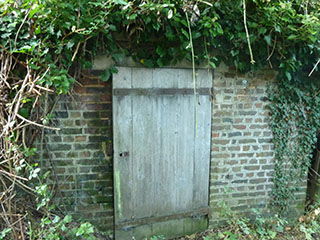Prochain point :
Table de lecture des Paysages
Prochain point : lat="49.1426" lon="1.70894"

The hydraulic network
Installations that developed over time
A complex supply...
Water management began to pose a problem for the commune in the eighteenth century. Situated on a plateau, the village of Omerville is a long way from any springs. The homes were supplied by water tanks or deep wells. Two outbreaks of typhoid fever (an infectious disease caused by a Salmonella type of bacteria, often due to poor water quality) occurred in 1879 and 1888. They affected about 25 people in the village, and 10 people died. A larger project to capture spring water had to be envisaged. Loans were taken out to convey the spring water to a place called "Le Temps Perdu” (Lost Time) in the village. The work was long and complex. Several entrepreneurs succeeded one another in the task.
... Solved by a water conveyance system
The new hydraulic system consisted of a hydraulic ram, a surge tank, a lifting pump and catch basins (the first basin was used to collect the spring water and the second to settle the suspended solids). The materials such as bricks, lime and plaster used for the buildings to house the infrastructures were characteristic of the industrial era.
The hydraulic ram system, designed and invented by Joseph Montgolfier in the late eighteenth century, was a lifting machine operated by running water, i.e. without relying any outside energy. The ram operated with the "water hammer" effect caused by the sudden stopping of the water flow in a pipe, using a valve. The excess pressure raised a portion of the water to a height ten times greater than the drop. The mechanical device was simple, inexpensive and required virtually no maintenance. The lifting pump carried the water from the ram to a municipal storage tank. The surge tank (about 8.50 meters high) made it possible to regulate the water flow between the catch basin and the storage tank. Commissioned in 1895, the system was in operation until 1974.





